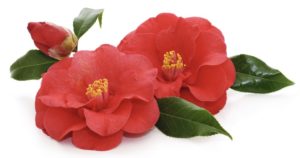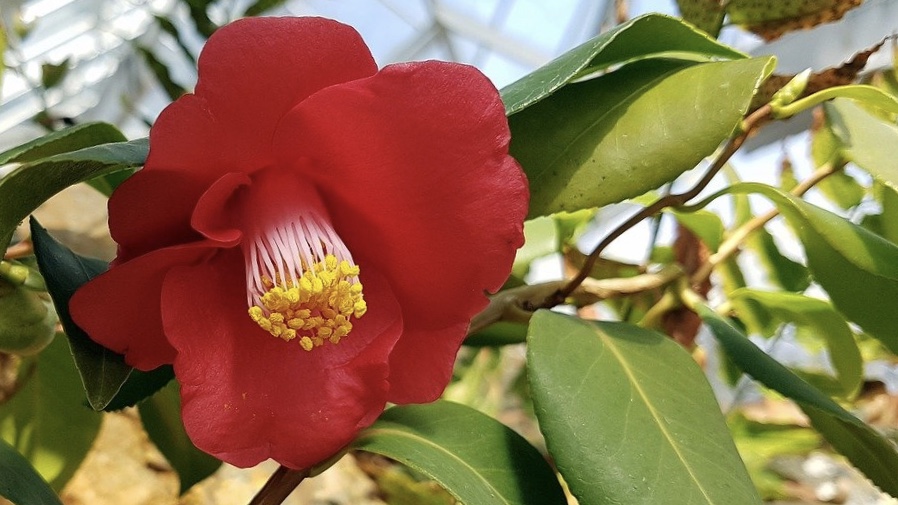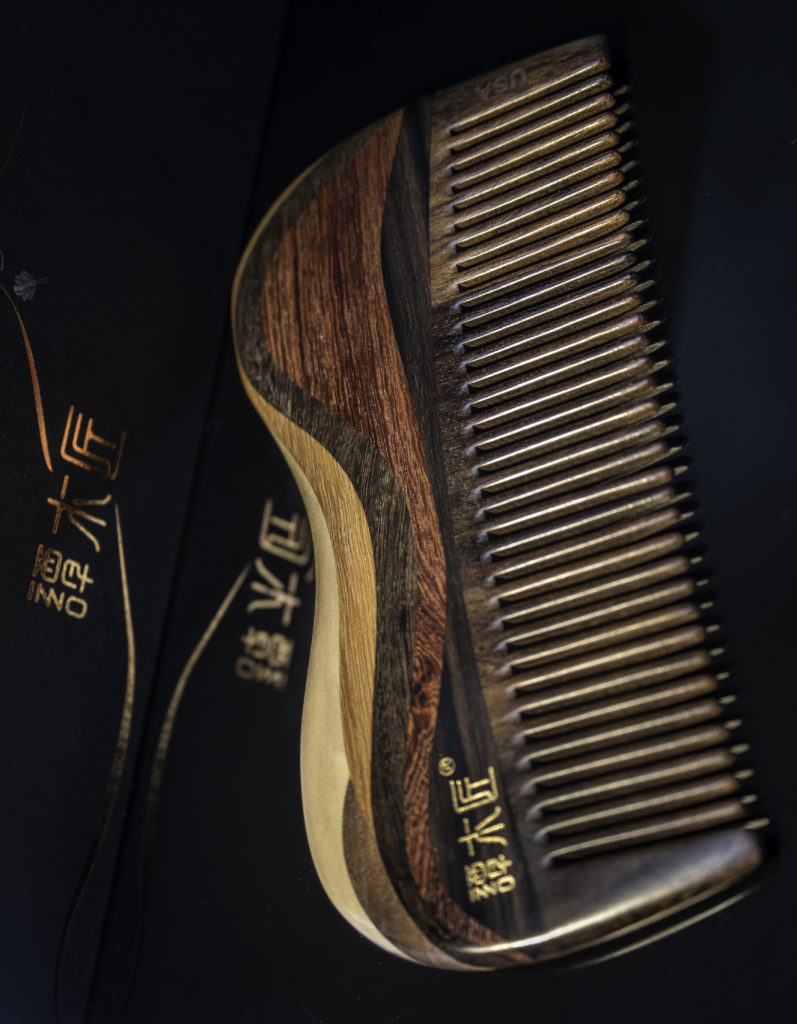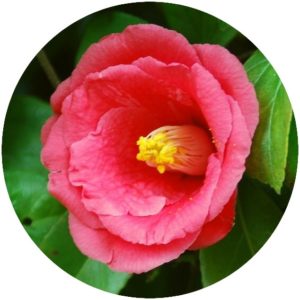We are featuring one of our favorite skincare beauty secrets: Camellia Japonica Oil. Learn about this prized ancient beauty secret weapon for lush, sleek hair and dewy, youthful skin.
Camellia Japonica Oil is also known as Japanese Camellia, common camellia, or Tsubaki Camellia. Tsubaki Camellia is the authentic Japanese Camellia seen in skincare ranges of brands such as Tatcha, Shiseido, and SK-II.
Camellia Japonica Oil is originally known as a prized, ancient Japanese beauty secret. In writings and texts about traditional use, Camellia Japonica Oil is often referred to as Tsubaki. Geishas used Tsubaki Camellia to get silky, shiny hair and luminous, youthful, soft skin.
Camellia Japonica oil is cold-pressed from the seeds of this lovely bloom. Camellia Japonica Oil is effective at transdermal collagen and elastin delivery.

Why We Love Camellia Japonica Oil
All camellia oil variants help skin, but Camilla Japonica oil is the real deal.
An excellent antioxidant and moisturizer, Camellia Japonica oil is rich in oleic acid, better known as Omega 9. Omega 9 helps the skin retain hydration.
Camellia japonica oil also contains polyphenols, vitamins A, D, C, and E.
This non-comedogenic oil promotes skin elasticity.[1]
This variant of Camellia oil is the most effective at transdermal collagen and elastin delivery. Choose cold-pressed whenever possible.
Camellia Japonica is a pale golden lightweight oil. It is similar to a hemi-squalene in its’ consistency. Because it feels light, it is easy to over-apply.
TIP: Only use a few drops and warm it in your hands before application. Pat, don’t rub onto skin.
It is a non-greasy and an excellent moisturizer but less is more when using authentic Japanese Camellia.
Tsubaki Camellia works wonders on dry, flat, dull hair. The fatty acids quickly absorb into the hair.
One bottle should last for quite some time. It only takes a few drops.
Locating Authentic Tsubaki
Authentic Camellia Japonica oil is elusive to procure but worth the effort. There are three kinds of camellia oil. All three benefit the skin, but authentic Tsubaki will only appear on the product ingredient label as Tsubaki or Tsubaki Camellia but more often as Camellia Japonica Oil or Japanese Camellia.
The following are skin-enhancing Camellia Oils, but not the authentic Tsubaki you want for the most skin benefits:
- Camellia Oleifera Seed Oil smooths rough skin patches and repairs the skin barrier. It also smoothes hair in a conditioner or leave-in serum.
- Camelia Sinensis is the leaves of green and white tea. It is an anti-inflammatory anti-oxidant with EGCG. EGCG enables the production of new cells in the epidermis [2]. Impressive, but not the collagen and elastin production powerhouse of genuine Camellia Japonica Oil.
Once you have procured authentic Tsubaki, here is how to use it on skin and hair:
How to Use Camellia Japonica Oil on the Hair
Tsubaki can be applied to wet or dry hair to serve as a conditioning treatment or styling agent. It is traditionally distributed through the hair with a Tsuge wooden comb. As seen in the photo, there are no sharp edges that can snag or damage the hair. The Tsubaki oil also conditions the wood, giving it a beautiful luster and depth to the grain.
Camellia Japonica Oil Leave-In Hair Treatment
For leave-in hair treatments, apply the oil to wet hair after washing. Allow hair to dry wrapped in a towel or air dry as much as possible. Comb after drying to distribute the oil.
Tsubaki Camellia for Hair Shine and Finishing
Tsubaki Camellia can be used on dry hair as a finishing treatment. It creates a lovely high sheen.
Our best tip for finishing hair with Tsubaki is to start with the least amount of oil you can dispense from the bottle.
Dispense just a few drops, even for long hair. Always warm Japanese Camellia Japonica oil between the palms. Spread on dry hair using the palm of the hands. Comb through with a Tsuge wooden comb if possible. Concentrate on the dry ends of the hair, and the comb will transfer the oils to the rest of the hair to evenly distribute.
Comb it through, and only add more Tsubaki as needed. Very little Camellia Japonica oil goes a long way. A dropper full is way too much. Practice plenty and count how many drops you dispense to hone your ideal amount for the next use.
Tsubaki creates a lovely healthy sheen to the hair while providing conditioning benefits.
How to Use Camellia Japonica on the Skin
Care of the skin was a ritual with this ancient beauty secret: none of the rubbing, scrubbing, or squeezing we tend to subject our skin to today. The skin was treated like an inherited gift that required the investment of time and effort to care for the skin, especially on face, throat, décolletage and hands.
Camellia oil absorbs very quickly. It permeates deep into lower layers of skin, promoting cell growth, and giving skin support and flexibility.
HOW TO APPLY CAMELLIA JAPONICA OIL TO SKIN
- Dispense a few drops of oil, rub your palms together.
- PAT the oil over your face and neck, don’t rub!
- Spread the oil in small circular motions in a gentle massage until it is absorbed.
It can be applied directly to a pimple, wrinkles, and crow’s feet. Camellia Japonica Oil can be used to treat eczema and dry patches.
Rice Bran Oil and Tsubaki
These oils are both wonderful for hair and skin but they work better when not mixed together. Apply Tsubaki first and allow it ample time to absorb. Follow with Rice Bran Oil if desired.
Camellia Japonica Fast Facts

Camellia Japonica Oil is extracted from the seeds of this lovely bloom. Camellia Japonica means shiny green leaf, denoting its’ foliage.
Tsubaki is:
- the authentic form of oil traditionally used as a beauty secret of Geishas.
- suitable for hair and skin
- anti-oxidant
- moisturizing
- rich in skin-hydrating fatty acid Omega 9
- restores bounce and elasticity to the skin
- contains polyphenols, Vitamins A, D, C, and E
- non-comedogenic
- promotes collagen and elastin production
- non-greasy
- fast-absorbing
References
- Jung, E. et al. Effect of Camellia japonica oil on human type I procollagen production and skin barrier function. Journal of ethnopharmacology 112.1, 127-131 (2007)
- Food and Chemical Toxicology, January 2000, issue 1, pages 79-96

